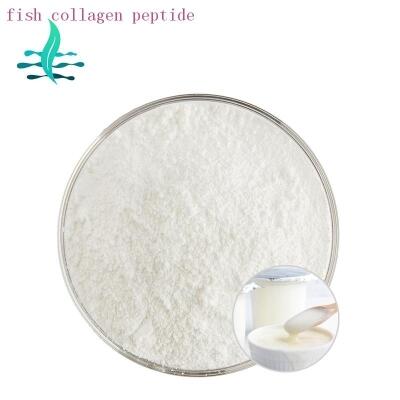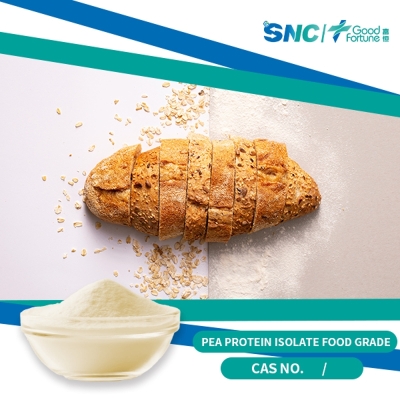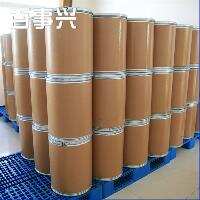The unscientific analysis of beetroot safe lyme substitute methionine.
-
Last Update: 2020-07-29
-
Source: Internet
-
Author: User
Search more information of high quality chemicals, good prices and reliable suppliers, visit
www.echemi.com
1 Background KaC1.1 In the second half of 2014, methionine prices soared to record highs in September and October 2014, and Methionine prices in China soared to record highsStatistics show that in the first half of 2014, the domestic methionine market as a whole showed weaknessIn mid-to-late August manufacturers began to raise prices, limited shipments: the end of August and early September, the domestic methionine supply serious shortagePrices rose strongly in mid-SeptemberDomestic methionine prices rose in a straight line, the end of September reached 85 yuan / kg; at the end of September, most industry insiders expected that after the National Day, methionine tight price steaming situation will be improved, but after the long holiday, the supply of methionine is still tight, feed plant out of production phenomenon serious; At present, the entire Asia - Pacific region is extremely tightEuropean market prices are also strong: in addition, domestic demand for methionine will also rise significantly in the fourth quarterMost industry insiders expect the strength of methionine to continue into December without problemsKaC1.2 methionine reasons analysis KaCoverall, the increase in methionine price is mainly due to the scarcity of goods, tight supplyThe shortage of methionine supply is caused by a number of factorsFirst of all, the problems in Degusay's work in the United States were not effectively resolved in mid-October: in addition, and the impact of the Olympic Games in Nanjing, and the impact of the Youth Olympic Games exacerbated the supply shortage in September: in October, the chemical plant of methionine intermediates also had problems, resulting in a global supply gap in methionine; Some of Europe's largest customers have signed contracts until JanuaryKaC1.3 Methionine rise caused by the problem KaCmethionine in feed, especially in poultry, but in the face of the current situation of the current price of methionine is unusually high, some poultry plants, especially some small poultry plants in order to ensure profits and normal production have to use other raw materials to replace part of methionine in the feed formulaAmong them, the use of beet-based substitute methionine, and this practice is not scientific, the following detailed analysis and discussion KaC 2 methionine and beetroot effect and characteristics KaC 2.1 Methionine is an important essential amino acid of animals , is the first restricted amino acid of the corn meal-type diet of poultry, is the first restrictive amino acid of high-yielding cow body milk and milk protein synthesis with corn as the main basis, or the second restricted amino acid of pigs The current methionine additives are mainly DL methionine (DLM), methionine hydroxyl analogue (MHA) and so on Myothine can be used as an essential amino acid synthesis of body proteins in animals to improve growth performance, can be converted into cysteine, play the role of liver detoxification, for the body to arch active methyl, participate in methyl metastasis and epinephrine, creatine, choline, keratin and nucleic acid synthesis;KaC 2.2 beetroot and its action KaC 2.2.1 beetbase characteristics KaC beetroot was originally extracted from beet, hence the name of trimethyl glycine It is also an oxidizing metabolite of choline After demethylation, glycine is produced, is a tidal-absorbing scaly or prismatic crystal, heated to 31O Left and right decomposition At present, beetroot is mainly in the form of waterless beetroot, beetroot phosphate and beetbase hydrochloride, of which most beet-alkali hydrochloride is chemically synthesized Usually 98% beetroot hydrochloride of 1 t is obtained from the reaction kettle of 96% chloracenate of 640 kg, 98% ammonium carbonate of 350 kg, triamine of 400 kg and 31% of the hydrochloric acid of 770 kg KaC 2.2.2 Beetroot's main role KaC 2.2.2.1 osmotic regulation KaC beetbase is an effective osmotic pressure regulator that helps cells maintain water balance At the same time, it can also protect the enzymes of cells from the damage caused by water loss and harmful substances Beetbase is highly soluble, and its high concentration does not interfere with many enzymes and other biomolecules, and even has a protective effect At present, beetroot is considered to be the most effective organic osmosis regulator, beetroot on the animal gastrointestinal cortex cells have osmotic protection, but also to prevent high osmosis pressure caused by apoptosis, thereby reducing the loss of gastrointestinal cells in animals KaC 2.2.2.2, the anti-heat stress effect of KaC Most current studies show that beetroot can reduce the negative effects of heat stress on animals Attia et al (2009) study showed that when chickens suffer from severe heat stress A certain amount of beetroot in the diet can relieve heat stress, the test data show When 1 kg of beetroot was added to the daily grain of the broiler, it significantly increased its average daily weight gain and feed conversion rate: in addition, the rectal temperature of broiler chicken also decreased from 43.2 degrees C to 41.9 degrees C in the control group, and the respiratory rate of broiler decreased from 78.3 times/min to 63.9 times/rain in the control group KaC 2.2.2.3 Promotes fat metabolism and inhibits fat production By promoting the synthesis of phospholipids in the body, on the one hand, reduces the activity of fat-forming enzymes in the liver, on the other hand, promotes the synthesis of lipoproteins in the liver, wherein very low density lipoproteinis is used to carry the main carrier protein of endogenous triglycerides, thus promoting the migration of fat in the liver, reducing the content of glyceride in the liver The reduction of serum triglycerides indicates that fat breakdown is strengthened and is directly reflected in the reduction of abdominal fat rate It can be seen that beetroot plays an anti-fatty liver by promoting fat decomposition and inhibiting fat production KaC 2-2.2.4 Improve the performance of livestock and poultry Production KaC most studies at home and abroad have shown that adding a certain amount of beetroot to livestock feed can improve the production performance of livestock and poultry KaC 3 beetroot substitute methionine unscientific analysis Of KaC in animals Beetin transfers methyl to high cysteine to synthesize methionine, which is produced by methionine metabolism There is not much high cysteine in natural feed During the conversion process, beetroot itself does not convert to methionine, it simply gives methyl There is also no net generation of new methionine during the cycle Therefore, beetroot only improves the utilization of methionine, and it is not a substitute for methionine for protein synthesis There are more than 100 methylation processes in animals that require methionine involvement Beetbase is involved in the circulating transmission of methyl activity, choline (oxidation) of a beetroot, in the circulation of methionine, a process that is irreversible Beetbase is a vitamin analogue with its special physiological function, mainly relying on the transformation of choline in the body The under-source portion can be added from an external source It is the product of the duochemical action of choline, and it is the intermediary of choline's participation in methyl metabolism It is worth especially suggesting that the molecular structure of beetroot has three methyls However, during the methylation reaction, only one methyl is provided, while the rest is oxidized and eventually converted into glycine So this process is just a circular delivery of methyl Instead of the synthetic pathway of methionine, it is not scientific to replace excess methionine with beetroot Therefore, it is unscientific for some feed enterprises to replace 30% of methionine with beetroot Even with a higher proportion of alternatives is not desirable Yuming (1997) replaced methionine with beet base in broiler diet, and the results showed that 88% of the needs of Methionine in Et grain methionine or more than 9O% of the total sulfur-containing amino acids were met Beetin can replace methionine, the amount of substitute methionine added to the amount of 1/2 or 1/3 is appropriate Schutte et al (1995) added O, 0.05% and 0.1% methionine to the broiler diet, and 0.04% of the beetbase at each methionine level showed that adding beetbase did not improve the daily weight gain of chicken, beetbase could not completely replace methionine In production, one must be aware of it, in addition to being a methyl donor Choline, methionine and beetroot each have different or irreplaceable metabolic effects The complete replacement of methionine with beetroot will cause a decrease in the production performance of livestock and poultry Therefore, producers must determine the amount of substitution based on the composition of H grain, and not blindly replace choline and methionine entirely with beetroot So for the current situation of high price of methionine Some feed plants use beetroot to replace most of myothemenines is very blind, is undoubtedly to lift a stone to hit their own feet, is very undesirable KaC 4 knots KaC the methyl metabolism process of beetroot and methionine is not a mathematical lysis relationship based on methyl quantity There are still many unknown seodons in the biochemical process esque in animals, which have yet to be studied, and beetroot in the process of methyl transmission Only methionine a high cysteine circulating methyl donor, only after methionine to meet the basic needs of animals, only have the effect of saving methionine The addition of beetroot as feed has undoubtedly added new blood to the development of animal husbandry, especially some data derived from production practices and scientific experiments In breeding and feed production, both have extremely valuable reference value, but due to the test conditions, design, methods The conclusions vary Even very different, so further research is needed to confirm this To sum up, methionine beetroot is a substance with 2 different chemical structures They have different physiological functions, but they do have the same physiological functions In terms of their personality That is, their physiological functions are irreplaceable: and the common aspect, that is, are the direct or indirect donor of methyl Therefore, there is "alternative" between them It is not so much a "substitute" as a "supplement" KaC 1 Background KaC 1.1 The price of methionine soared to an all-time high in the second half of 2014, and in September and October 2014, the price of methionine in China soared to an all-time high Statistics show that in the first half of 2014, the domestic methionine market as a whole showed weakness In mid-to-late August manufacturers began to raise prices, limited shipments: the end of August and early September, the domestic methionine supply serious shortage Prices rose strongly in mid-September Domestic methionine prices rose in a straight line, the end of September reached 85 yuan / kg; at the end of September, most industry insiders expected that after the National Day, methionine tight price steaming situation will be improved, but after the long holiday, the supply of methionine is still tight, feed plant out of production phenomenon serious; At present, the entire Asia - Pacific region is extremely tight European market prices are also strong: in addition, domestic demand for methionine will also rise significantly in the fourth quarter Most industry insiders expect the strength of methionine to continue into December without problems KaC 1.2 methionine reasons analysis KaC overall, the increase in methionine price is mainly due to the scarcity of goods, tight supply The shortage of methionine supply is caused by a number of factors First of all, the problems in Degusay's work in the United States were not effectively resolved in mid-October: in addition, and the impact of the Olympic Games in Nanjing, and the impact of the Youth Olympic Games exacerbated the supply shortage in September: in October, the chemical plant of methionine intermediates also had problems, resulting in a global supply gap in methionine; Some of Europe's largest customers have signed contracts until January KaC 1.3 Methionine rise caused by the problem KaC methionine in feed, especially in poultry, but in the face of the current situation of the current price of methionine is unusually high, some poultry plants, especially some small poultry plants in order to ensure profits and normal production have to use other raw materials to replace part of methionine in the feed formula Among them, the use of beet-based substitute methionine, and this practice is not scientific, the following detailed analysis and discussion KaC 2 methionine and beetroot effect and characteristics KaC 2.1 Methionine is an important essential amino acid of animals , is the first restricted amino acid of the corn meal-type diet of poultry, is the first restrictive amino acid of high-yielding cow body milk and milk protein synthesis with corn as the main basis, or the second restricted amino acid of pigs The current methionine additives are mainly DL methionine (DLM), methionine hydroxyl analogue (MHA) and so on Myothine can be used as an essential amino acid synthesis of body proteins in animals to improve growth performance, can be converted into cysteine, play the role of liver detoxification, for the body to arch active methyl, participate in methyl metastasis and epinephrine, creatine, choline, keratin and nucleic acid synthesis;KaC 2.2 beetroot and its action KaC 2.2.1 beetbase characteristics KaC beetroot was originally extracted from beet, hence the name of trimethyl glycine It is also an oxidizing metabolite of choline After demethylation, glycine is produced, is a tidal-absorbing scaly or prismatic crystal, heated to 31O Left and right decomposition At present, beetroot is mainly in the form of waterless beetroot, beetroot phosphate and beetbase hydrochloride, of which most beet-alkali hydrochloride is chemically synthesized Usually 98% beetroot hydrochloride of 1 t is obtained from the reaction kettle of 96% chloracenate of 640 kg, 98% ammonium carbonate of 350 kg, triamine of 400 kg and 31% of the hydrochloric acid of 770 kg KaC 2.2.2 Beetroot's main role KaC 2.2.2.1 osmotic regulation KaC beetbase is an effective osmotic pressure regulator that helps cells maintain water balance At the same time, it can also protect the enzymes of cells from the damage caused by water loss and harmful substances Beetbase is highly soluble, and its high concentration does not interfere with many enzymes and other biomolecules, and even has a protective effect At present, beetroot is considered to be the most effective organic osmosis regulator, beetroot on the animal gastrointestinal cortex cells have osmotic protection, but also to prevent high osmosis pressure caused by apoptosis, thereby reducing the loss of gastrointestinal cells in animals KaC 2.2.2.
This article is an English version of an article which is originally in the Chinese language on echemi.com and is provided for information purposes only.
This website makes no representation or warranty of any kind, either expressed or implied, as to the accuracy, completeness ownership or reliability of
the article or any translations thereof. If you have any concerns or complaints relating to the article, please send an email, providing a detailed
description of the concern or complaint, to
service@echemi.com. A staff member will contact you within 5 working days. Once verified, infringing content
will be removed immediately.







